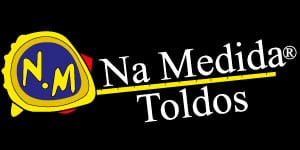Therefore, the accounting equation is basically presented in the Balance Sheet such that the total holds. If hypothetically, the total does not hold, this means that some of the transactions (or class of accounts) have been categorized improperly. It can be regarded as the very basis of maintaining accounts for any particular organization. The main premise of the balance sheet in this regard is to show the assets held by the company are equal to the sum of liabilities and equity held by the company at a particular date.
Accounting Equation for a Corporation: Transactions C1–C2
This business transaction increases company cash and increases equity by the same amount. When a company purchases goods or services from other companies on credit, a payable is recorded to show that the company promises to pay the other companies for their assets. Now that we have a basic understanding of the equation, let’s take a look at each accounting equation component starting with the assets. This is how the accounting equation of Laura’s business looks like after incorporating the effects of all transactions at the end of month 1. In this example, we will see how this accounting equation will transform once we consider the effects of transactions from the first month of Laura’s business.
The Financial Modeling Certification
The totals indicate that ASC has assets of $9,900 and the source of those assets is the owner of the company. You can also conclude that the company has assets or resources of $9,900 and the only claim against those resources is the owner’s claim. A balanced accounting equation starts with an efficient AP process. Gain control, reduce errors, and improve financial accuracy with expert strategies.
Assets, Liabilities, And Equity
It represents the total profits that have been saved and put aside or “retained” for future use. Accounts receivable lists the amounts of money owed to the company by its customers for the sale of its products. Working capital indicates whether a company will have the money needed to pay its bills and other obligations when they are due. Barbara is a financial writer for Tipalti and other successful B2B businesses, including SaaS and financial companies. She is a former CFO for fast-growing tech companies with Deloitte audit experience.
- Taking time to learn the accounting equation and to recognise the dual aspect of every transaction will help you to understand the fundamentals of accounting.
- Drawings are amounts taken out of the business by the business owner.
- Let’s check out what causes increases and decreases in the owner’s equity.
- Since the loss is outside of the main activity of a business, it is reported as a nonoperating or other loss.
Can AP automation help keep your accounting equation in balance?
Just like the accounting equation, it shows us that total assets equal total liabilities and owner’s equity. This includes paying off liabilities with year-end accounts and CT returns services. The purpose of this article is to consider the fundamentals of the accounting equation and to demonstrate how it works when applied to various transactions. The accounting equation represents a relation between assets, liabilities, and shareholders’ equity. A business preparing balance sheets shows that the double entry system is being followed. The accounting equation is a model that states a company’s total assets are equal to the sum of total liability and shareholders’ equity.
Balance Sheets shown above, as well as the Income Statement and detailed Statement of Stockholder’s Equity in this section. Accumulated Other Comprehensive Income (Loss), AOCIL, is a component of shareholders’ equity besides contributed capital and retained earnings. In this expanded accounting equation, CC, the Contributed Capital or paid-in capital, represents Share Capital.
Advertising Expense will be reported under selling expenses on the income statement. When the allowance account is used, the company is anticipating that some accounts will be uncollectible in advance of knowing the specific account. As a result the bad debts expense is more closely matched to the sale. When a specific account is identified as uncollectible, the Allowance for Doubtful Accounts should be debited and Accounts Receivable should be credited. The credit balance in this account comes from the entry wherein Bad Debts Expense is debited.
Incorrect classification of an expense does not affect the accounting equation. Regardless of how the accounting equation is represented, it is important to remember that the equation must always balance. A corporation’s own stock that has been repurchased from stockholders. Also a stockholders’ equity account that usually reports the cost of the stock that has been repurchased. Liabilities also include amounts received in advance for a future sale or for a future service to be performed. You should consider our materials to be an introduction to selected accounting and bookkeeping topics (with complexities likely omitted).
- The initial and subsequent investments made by business owners represent the foundation of equity.
- Think of liabilities as obligations — the company has an obligation to make payments on loans or mortgages or they risk damage to their credit and business.
- It is one of those equations from which a multitude of other equations is derived.
- The difference between the $400 income and $250 cost of sales represents a profit of $150.
- For the accounting period of the four days ended December 4, there is no revenue or expense to be reported on the income statement.
- If you’re not an accounting nerd, this all might seem a bit dense.
The accounting equation’s left side represents everything a business has (assets), and the right side shows what a business owes to creditors and owners (liabilities and equity). The contra owner’s equity account used to record the current year’s withdrawals of business assets by the sole proprietor for personal use. It will be closed at the end of the year to the owner’s capital account. Since ASI has completed the services, it has earned revenues and it has the right to receive $900 from its clients. The earning of revenues also causes stockholders’ equity to increase.
In accounting, the claims of creditors are referred to as liabilities and the claims of owner are referred to as owner’s equity. When the total assets of a business increase, then its total liabilities or owner’s equity also increase. Like any mathematical equation, the accounting equation can be rearranged and expressed in terms of liabilities or owner’s equity instead of assets.
Well-managed businesses strive to free up human labor to work on value-based vs. routine accounting tasks while automating manual processes. The best accountants and finance professionals need this extra time to contribute to better business results. Learn more about the benefits of accounts payable automation software with integration to your ERP system. Here’s a screenshot of Alphabet Inc.’s Consolidated Balance Sheets from its 10-K annual report filing with the SEC for the year ended December 31, 2021.
From setting up your organization to inviting your colleagues and accountant, you can achieve all this with Deskera Books. You can witness the easy implementation of the tool and try it out to get a renewed experience while handling your accounting system. This knowledge gap explains why many growing businesses bring in virtual CFO services during fundraising periods. If you’re not an accounting nerd, this all might seem a bit dense. It’s so much more exciting to focus on product development, marketing strategies, or customer acquisition.
Every transaction has equal debits and credits, reflecting the fundamental truth that resources must come from somewhere and go somewhere. Left up to ambiguity or opinion, accounting becomes a dangerous liability rather than the strategic asset it should be. The numbers either balance or they don’t – there’s rarely room for interpretation in the fundamental principles that govern financial reporting. Assets typically hold positive accounting equation explained economic value and can be liquified (turned into cash) in the future.
For example, interest earned by a manufacturer on its investments is a nonoperating revenue. Interest earned by a bank is considered to be part of operating revenues. The global adherence to the double-entry accounting system makes the account-keeping and -tallying processes more standardized and foolproof.
The totals tell us that the company has assets of $9,900 and that the only claim against those assets is the stockholders’ claim. The purchase of its own stock for cash causes ASI’s assets to decrease by $100 and its stockholders’ equity to decrease by $100. Since ASI has not yet earned any revenues nor incurred any expenses, there are no amounts to be reported on an income statement.
Rather, the amount earned is recorded in the revenue account Service Revenues. At some point, the amount in the revenue accounts will be transferred to the retained earnings account. Although stockholders’ equity decreases because of an expense, the transaction is not recorded directly into the retained earnings account.









